Hell
From Wikipedia, the free encyclopedia
This article is about the theological or philosophical afterlife. For other uses, see Hell (disambiguation).
In many mythological, folklore and religious traditions, hell is a place of torment and punishment in an afterlife. It is viewed by most Abrahamic traditions as punishment.[1] Religions with a linear divine history often depict hells as eternal destinations. Religions with acyclic history often depict a hell as an intermediary period between incarnations. Typically these traditions locate hell in another dimension or under the Earth's surface and often include entrances to Hell from the land of the living. Other afterlife destinations include Heaven,Purgatory, Paradise, and Limbo.
Other traditions, which do not conceive of the afterlife as a place of punishment or reward, merely describe hell as an abode of the dead, the grave, a neutral place located under the surface of Earth (for example, see sheol and Hades). Hell is sometimes portrayed as populated with demons who torment those dwelling there. Many are ruled by a death god such as Nergal, Hades, Hel, Enma or the Devil.
Contents
[hide]Etymology and Germanic mythology
The modern English word Hell is derived from Old English hel, helle (about 725 AD to refer to a nether world of the dead) reaching into the Anglo-Saxon pagan period, and ultimately from Proto-Germanic *halja, meaning "one who covers up or hides something".[2] The word has cognates in related Germanic languages such as Old Frisian helle, hille, Old Saxon hellja, Middle Dutch helle (modern Dutch hel), Old High German helle(Modern German Hölle), Danish, Norwegian and Swedish helvede/helvete (hel + Old Norse vitti, "punishment" whence the Icelandic víti "hell"), and Gothic halja.[2] Subsequently, the word was used to transfer a pagan concept to Christian theology and its vocabulary[2] (however, for the Judeo-Christian origin of the concept see Gehenna).
Some have theorized that English word hell is derived from Old Norse hel.[2] However, this is very unlikely as hel appears in Old English before the Viking invasions. Furthermore, the word has cognates in all the other Germanic languages and has a Proto-Germanic origin.[3] Among other sources, the Poetic Edda, compiled from earlier traditional sources in the 13th century, and the Prose Edda, written in the 13th century by Snorri Sturluson, provide information regarding the beliefs of the Norse pagans, including a being named Hel, who is described as ruling over an underworld location of the same name.
Religion, mythology, and folklore
Hell appears in several mythologies and religions. It is commonly inhabited by demons and the souls of dead people. A fable about hell which recurs in folklore across several cultures is the allegory of the long spoons. Hell is often depicted in art and literature, perhaps most famously inDante's Divine Comedy.
Punishment
Punishment in Hell typically corresponds to sins committed during life. Sometimes these distinctions are specific, with damned souls suffering for each sin committed (see for example Plato's myth of Er or Dante's The Divine Comedy), but sometimes they are general, with condemned sinners relegated to one or more chamber of Hell or to a level of suffering.
In many religious cultures, including Christianity and Islam, Hell is traditionally depicted as fiery and painful, inflicting guilt and suffering.[4][specify]Despite these common depictions of Hell as a place of fire, some other traditions portray Hell as cold. Buddhist - and particularly Tibetan Buddhist - descriptions of hell feature an equal number of hot and cold hells. Among Christian descriptions Dante's Inferno portrays the innermost (9th) circle of Hell as a frozen lake of blood and guilt.[5] But cold also played a part in earlier Christian depictions of hell, beginning with the Apocalypse of Paul, originally from the early third century;[6] the "Vision of Dryhthelm" by the Venerable Bede from the seventh century;[7] "St Patrick's Purgatory", "The Vision of Tundale" or "Visio Tnugdali", and the "Vision of the Monk of Enysham", all from the twelfth century;[8] and the "Vision of Thurkill" from the early thirteenth century.[9]
Polytheism
Ancient Egypt
With the rise of the cult of Osiris during the Middle Kingdom the "democratization of religion" offered to even his humblest followers the prospect of eternal life, with moral fitness becoming the dominant factor in determining a person's suitability. At death a person faced judgment by a tribunal of forty-two divine judges. If they had led a life in conformance with the precepts of the Goddess Maat, who represented truth and right living, the person was welcomed into the Two Fields. If found guilty the person was thrown to a "devourer" and would be condemned to the lake of fire.[10]The person taken by the devourer is subject first to terrifying punishment and then annihilated. These depictions of punishment may have influenced medieval perceptions of the inferno in hell via early Christian and Coptic texts.[11] Purification for those considered justified appears in the descriptions of "Flame Island", where humans experience the triumph over evil and rebirth. For the damned complete destruction into a state of non-being awaits but there is no suggestion of eternal torture; the weighing of the heart in Egyptian Mythology can lead to annihilation.[12][13]The Tale of Khaemwese describes the torment of a rich man, who lacked charity, when he dies and compares it to the blessed state of a poor man who has also died.[14] Divine pardon at judgement always remained a central concern for the Ancient Egyptians.[15]
Modern understanding of Egyptian notions of hell relies on six ancient texts:[16]
- The Book of Two Ways (Book of the Ways of Rosetau)
- The Book of Amduat (Book of the Hidden Room, Book of That Which Is in the Underworld)
- The Book of Gates
- The Book of the Dead (Book of Going Forth by Day)
- The Book of the Earth
- The Book of Caverns
Ancient Near East
The cultures of Mesopotamia (including Sumeria, the Akkadian Empire, Babylonia and Assyria), the Hittites and the Canaanites/Ugarits reveal some of the earliest evidence for the notion of a Netherworld or Underworld. From among the few texts that survive from these civilizations, this evidence appears in the Epic of Gilgamesh, the “Descent of Inannato the Netherworld,” “Baal and the Underworld,” the “Descent of Ishtar” and the “Vision of Kummâ.”[17]
Greek
Main article: Tartarus
In classic Greek mythology, below Heaven, Earth, and Pontus is Tartarus, or Tartaros (Greek Τάρταρος, deep place). It is either a deep, gloomy place, a pit or abyss used as a dungeon of torment and suffering that resides within Hades (the entire underworld) with Tartarus being the hellish component. In the Gorgias, Plato (c. 400 BC) wrote that souls were judged after death and those who received punishment were sent to Tartarus. As a place of punishment, it can be considered a hell. The classic Hades, on the other hand, is more similar to Old Testament Sheol.
Europe
The hells of Europe include Breton Mythology's "Anaon", Celtic Mythology's "Uffern", Slavic mythology's "Peklo", the hell of Sami mythology and Finnish "tuonela" ("manala").
Asia
The hells of Asia include the Bagobo “Gimokodan” and Ancient Indian mythology's “Kalichi" or "Naraka".
In folklore among the Ainu people, hell is below ground, and is described as an uninviting wet place reserved for sinful people.[18]
Africa
African hells include Haida Mythology's “Hetgwauge” and the hell of Swahili Mythology (kuzimu). Serer religion rejects the general notion ofheaven and hell.[19] In Serer religion, acceptance by the ancestors who have long departed is as close to any heaven as one can get. Rejection and becoming a wandering soul is a sort of hell for one passing over. The souls of the dead must make their way to Jaaniw (the sacred dwelling place of the soul). Only those who have lived their lives on earth in accordance with Serer doctrines will be able to make this necessary journey and thus accepted by the ancestors. Those who can't make the journey become lost and wandering souls, but they do not burn in "hell fire".[19][20]
Oceania
| This section requires expansion.(November 2012) |
The Oceanic hells include Samoan Mythology's “O le nu'u-o-nonoa” and the hells of Bangka Mythology and Caroline Islands Mythology.
Native American
The hells of the Americas include the Aztec religion's “Mictlan”, Inuit religion's “Adlivun”, and the Yanomami religion's “Shobari Waka”. In Mayan religion, Xibalbá is the dangerous underworld of nine levels ruled by the demons Vucub Caquix and Hun Came. The road into and out of it is said to be steep, thorny and very forbidding. Metnal is the lowest and most horrible of the nine Hells of the underworld, ruled by Ah Puch. Ritual healers would intone healing prayers banishing diseases to Metnal. Much of the Popol Vuh describes the adventures of the Maya Hero Twins in their cunning struggle with the evil lords of Xibalbá.
The Aztecs believed that the dead traveled to Mictlan, a neutral place found far to the north. There was also a legend of a place of white flowers, which was always dark, and was home to the gods of death, particularly Mictlantecutli and his spouse Mictlantecihuatl, which means literally "lords of Mictlan". The journey to Mictlan took four years, and the travelers had to overcome difficult tests, such as passing a mountain range where the mountains crashed into each other, a field where the wind carried flesh-scraping knives, and a river of blood with fearsome jaguars.
Abrahamic
Judaism
| This section does not cite any references or sources. (November 2009) |
Early Judaism had no concept of Hell, though the concept of an afterlife was introduced during the Hellenic period, apparently from neighboring Hellenistic religions. It occurs for example in Book of Daniel. Daniel 12:2 proclaims "And many of those who sleep in the dust of the earth shall awake, Some to everlasting life, Some to shame and everlasting contempt." Judaism does not have a specific doctrine about the afterlife, but it does have a mystical/Orthodox tradition of describing Gehenna. Gehenna is not Hell, but originally a grave and in later times a sort of Purgatory where one is judged based on one's life's deeds, or rather, where one becomes fully aware of one's own shortcomings and negative actions during one's life. The Kabbalah explains it as a "waiting room" (commonly translated as an "entry way") for all souls (not just the wicked). The overwhelming majority of rabbinic thought maintains that people are not in Gehenna forever; the longest that one can be there is said to be 12 months, however there has been the occasional noted exception. Some consider it a spiritual forge where the soul is purified for its eventual ascent to Olam Habah (heb. עולם הבא; lit. "The world to come", often viewed as analogous toHeaven). This is also mentioned in the Kabbalah, where the soul is described as breaking, like the flame of a candle lighting another: the part of the soul that ascends being pure and the "unfinished" piece being reborn.
According to Jewish teachings, hell is not entirely physical; rather, it can be compared to a very intense feeling of shame. People are ashamed of their misdeeds and this constitutes suffering which makes up for the bad deeds. When one has so deviated from the will of God, one is said to be in gehinom. This is not meant to refer to some point in the future, but to the very present moment. The gates of teshuva (return) are said to be always open, and so one can align his will with that of God at any moment. Being out of alignment with God's will is itself a punishment according to the Torah.
Christianity
Main article: Christian views on hell
The Christian doctrine of hell derives from the teaching of the New Testament, where hell is typically described using the Greek wordsTartarus or Hades or the Hebrew word Gehenna. In the Septuagint and New Testament the authors used the Greek term Hades for the Hebrew Sheol, but often with Jewish rather than Greek concepts in mind, so that, for example, there is no activity in Hades in Ecclesiastes.[21] However, since Augustine, Christians have believed that the souls of those who die either rest peacefully, in the case of Christians, or are afflicted, in the case of the damned, after death until the resurrection.[22]
| Hebrew OT | Septuagint | Greek NT | times in NT | Vulgate | KJV | NIV |
|---|---|---|---|---|---|---|
| Sheol[23] | Hades | Hades[24] | x10 | infernus[25] | Hell | Hades |
| Ge Hinom[26] | Ennom[27] | Gehenna[28] | x11 | infernus | Hell | Hell |
| tartaro'o[29] | x1 | infernus | Hell | Hell |
These three terms have different meanings and must be recognized.
- Hades has similarities to the Old Testament term, Sheol as "the place of the dead" or "grave". Thus, it is used in reference to both the righteous and the wicked, since both wind up there eventually.[30]
- Gehenna refers to the "Valley of Hinnom", which was a garbage dump outside of Jerusalem. It was a place where people burned their garbage and thus there was always a fire burning there. Bodies of those deemed to have died in sin without hope of salvation (such as people who committed suicide) were thrown there to be destroyed.[31]Gehenna is used in the New Testament as a metaphor for the final place of punishment for the wicked after the resurrection.[32]
- Tartaro'o (the verb "throw to Tartarus") occurs only once in the New Testament in II Peter 2:4, where it is parallel to the use of the noun form in 1 Enoch as the place of incarceration of the fallen angels. It mentions nothing about human souls being sent there in the afterlife.
The Roman Catholic Church defines Hell as "a state of definitive self-exclusion from communion with God and the blessed." One finds themselves in Hell as the result of dying in mortal sin without repenting and accepting God's merciful love, becoming eternally separated from Him by one's own free choice[33] immediately after death.[34] In the Roman Catholic Church, many other Christian churches, such as the Baptists and Episcopalians, and some Greek Orthodox churches,[35] Hell is taught as the final destiny of those who have not been found worthy after the general resurrection and last judgment,[36][37][38] where they will be eternally punished for sin and permanently separated from God. The nature of this judgment is inconsistent with many Protestant churches teaching the saving comes from accepting Jesus Christ as their savior, while the Greek Orthodox and Catholic Churches teach that the judgment hinges on both faith and works. However, many Liberal Christians throughout Liberal Protestant and Anglican churches believe in Universal Reconciliation (see below) even though it might contradict more evangelical views in their denomination.[39]
Some modern Christian theologians subscribe to the doctrines of Conditional Immortality. Conditional Immortality is the belief that the soul dies with the body and does not live again until the resurrection. As with other Jewish writings of the Second Temple period, the New Testament text distinguishes two words, both translated "Hell" in older English Bibles: Hades, "the grave", and Gehenna where God "can destroy both body and soul".[40] A minority of Christians read this to mean that neither Hades nor Gehenna are eternal but refer to the ultimate destruction of the wicked in the Lake of Fire in a consuming fire after resurrection. However, because of the Greek words used in translating from the Hebrew text has become confused with Greek myths and ideas. In the Hebrew text when people died they went toSheol, the grave[41] and the wicked ultimately went to Gehenna which is the consuming by fire. So we see where the grave or death or eventual destruction of the wicked, was translated using Greek words that since they had no exact ones to use, became a mix of mistranslation, pagan influence, and Greek myth associated with the word, but its original meaning was simple death or the destruction of the wicked at the end.[42]
Christian mortalism is the doctrine that all men and women, including Christians, must die, and do not continue and are not conscious after death. Therefore annihilationism includes the doctrine that "the wicked" are also destroyed rather than tormented forever in traditional "Hell" or the lake of fire. Christian mortalism and annihilationism are directly related to the doctrine of conditional immortality, the idea that a human soul is not immortal unless it is given eternal life at the second coming of Christ and resurrection of the dead. Such a belief is based on the many texts which show the wicked perish: "For God so loved the world, that he gave his only begotten Son, that whosoever believeth in him should not perish, but have everlasting life." John 3:16 (KJV). "For the day of the Lord is near upon all the heathen: as thou hast done, it shall be done unto thee: thy reward shall return upon thine own head. For as ye have drunk upon my holy mountain, so shall all the heathen drink continually, yea, they shall drink, and they shall swallow down, and they shall be as though they had not been." Obadiah 1:15-16 (KJV).
This is the minority view is held by a growing number of Bible scholars with many biblical scholars looking at the issue through the Hebrew text, have denied the teaching of innate immortality.[43][44] Rejection of the immortality of the soul, and advocacy of Christian mortalism, was a feature of Protestantism since the early days of the Reformation with Martin Luther himself rejecting the traditional idea, though his view did not carry into orthodox Lutheranism. One of the most notable English opponents of the immortality of the soul was Thomas Hobbes who describes the idea as a Greek "contagion" in Christian doctrine.[45] Modern proponents of conditional immortality include some in the Anglican church such as N.T. Wright[46] and as denominations theSeventh-day Adventists, Bible Students, Jehovah's Witnesses, Christadelphians, Living Church of God, The Church of God International, and some other Protestant Christians.
Annihilationism is the belief that the soul is mortal unless granted eternal life, making it possible to be destroyed in Hell.
The Seventh-day Adventist Church's official beliefs support annihilation,[47] and teaches annihilation.[48] They deny the Catholic purgatory and teach that the dead lie in the grave until they are raised for a last judgment, both the righteous and wicked await the resurrection at the Second Coming. Seventh-day Adventists believe that death is a state ofunconscious sleep until the resurrection. They base this belief on biblical texts such as Ecclesiastes 9:5 which states "the dead know nothing", and 1 Thessalonians 4:13-18which contains a description of the dead being raised from the grave at the second coming. These verses, it is argued, indicate that death is only a period or form of slumber.
Adventists teach that the resurrection of the righteous will take place at the second coming of Jesus, while the resurrection of the wicked will occur after the millennium ofRevelation 20. They reject the traditional doctrine of hell as a state of everlasting conscious torment, believing instead that the wicked will be permanently destroyed after the millennium or Annihilationism.
The Adventist views about death and hell reflect an underlying belief in: (a) conditional immortality (or conditionalism), as opposed to the immortality of the soul; and (b) theholistic (or monistic) Christian anthropology or nature of human beings, as opposed to bipartite or tripartite views.
Jehovah's Witnesses hold that the soul ceases to exist when the person dies[49] and therefore that Hell (Sheol or Hades) is a state of non-existence.[49] In their theology, Gehenna differs from Sheol or Hades in that it holds no hope of a resurrection.[49] Tatarus is held to be the metaphorical state of debasement of the fallen angels between the time of their moral fall (Genesis chapter 6) until their post-millennial destruction along with Satan (Revelation chapter 20).[50]
Universal Reconciliation is the belief that all human souls (even demons and fallen angels) will be eventually reconciled with God and admitted to Heaven. This view is held by some Unitarian-Universalists.[51][52][53]
According to Emanuel Swedenborg’s Second Coming Christian revelation, hell exists because evil people want it.[54] They, not God, introduced evil to the human race.[55]
Members of The Church of Jesus Christ of Latter-day Saints (LDS Church) teach that hell is a state between death and resurrection, in which those spirits who did not repent while on earth must suffer for their own sins (Doctrine and Covenants 19:15–17[56]). In this sense, Mormons regard hell as a temporary state that ends for a spirit once they have "paid the uttermost farthing" (Matt 5:26) for the sins they committed. As David wrote, "thou wilt not leave my soul in hell" (Psalms 16:10, 86:13, Acts 2:27). This punishment can be characterized as a mental anguish for sins committed, which Mormons believe Christ took upon himself for all mankind while in the Garden of Gethsemane—"that they may not suffer if they would repent." (Doctrine and Covenants 19:16[57]). Mormons believe Christ initiated missionary work in the spirit world during the period between his own death and resurrection (1 Peter 3:19, 4:6), at which time he commissioned righteous spirits to teach the gospel to those who didn't have the opportunity to receive it while on earth (Doctrine and Covenants 138:30[58]). Those spirits who accept the gospel are able to repent, whereas those who choose not to repent are destined to remain in hell throughout the Millennium.[59] At the times appointed for the resurrection, "death and hell" will deliver up the dead that are in them, to be judged according to their works (Rev 20:13). At that time, all but the sons of perdition will attain a degree of glory, which Peter compared to the glory of the sun, moon, and stars (1 Cor 15:41). In another sense, hell is referred to as the permanent state of those who are not redeemed by the atonement of Jesus Christ, which will include the sons of perdition, as well as Satan and his angels.[59]
Islam
Main article: Jahannam
In Islam, jahannam (in Arabic: جهنم) (related to the Hebrew word gehinnom) is a place of blazing fire, boiling water, and a variety of torments for those condemned to it in the hereafter. After the Day of Judgement, it is to be occupied by those who do not believe in God, have disobeyed His laws, and/or rejected His messengers.[60] "Enemies of Islam", are sentenced immediately to Hell upon death.[61]
Like Zoroastrianism, Muslims believe that on Judgement Day all souls will pass over a bridge over hell (Chinvat Bridge in Zorastrianism,As-Sirāt in Islam) which those destined for hell will find too narrow and fall below into their new abode.[62] Jahannam resembles the Christian versions of Hell in being below heaven and full of fire, but is not the home of the devil.[63]
The holy book of Islam, the Qur'an, gives many literal descriptions of the condemned in a fiery Hell, contrasting them with the garden-likeParadise (jannah) enjoyed by righteous believers. Suffering in hell is both physical and spiritual,[61][64] and varies according to the sins of the condemned.[63]
Heaven and Hell are each divided into seven different levels, with occupants assigned to each depending on their actions—good or bad—perpetrated during their lifetimes. The gate of Hell is guarded by Maalik who is the leader of the angels assigned as the guards of hell also known as Zabaaniyah. While hell is usually described as hot, there is one pit (Zamhareer) characterized in Islamic tradition as unbearably cold, with blizzards, ice, and snow.[65]
Hypocrisy, shirk (polytheism) are particularly grievous sins and the lowest pit of Hell (Hawiyah), is intended for hypocrites who claimed aloud to believe in Allah and His messenger but in their hearts did not.[66] Not all Muslims and scholars agree whether hell is an eternal destination or whether some or even all of the condemned will eventually be forgiven and allowed to enter paradise.[60][61][63][67]
Bahá'í Faith
In the Bahá'í Faith, the conventional descriptions of Hell and Heaven are considered to be symbolic representations of spiritual conditions. The Bahá'í writings describe closeness to God to be heaven, and conversely, remoteness from God as hell.[68]
Eastern
Buddhism
Main article: Naraka (Buddhism)
In "Devaduta Sutta", the 130th discourse of the Majjhima Nikaya, Buddha teaches about hell in vivid detail. Buddhism teaches that there are five (sometimes six) realms of rebirth, which can then be further subdivided into degrees of agony or pleasure. Of these realms, the hell realms, or Naraka, is the lowest realm of rebirth. Of the hell realms, the worst is Avīci or "endless suffering". The Buddha's disciple,Devadatta, who tried to kill the Buddha on three occasions, as well as create a schism in the monastic order, is said to have been reborn in the Avici Hell.
However, like all realms of rebirth, rebirth in the Hell realms is not permanent, though suffering can persist for eons before being reborn again. In the Lotus Sutra, the Buddha teaches that eventually even Devadatta will become a Pratyekabuddha himself, emphasizing the temporary nature of the Hell realms. Thus, Buddhism teaches to escape the endless migration of rebirths (both positive and negative) through the attainment of Nirvana.
The Bodhisattva Ksitigarbha, according to the Ksitigarbha Sutra, made a great vow as a young girl to not reach Nirvana until all beings were liberated from the Hell Realms or other unwholesome rebirths. In popular literature, Ksitigarbha travels to the Hell realms to teach and relieve beings of their suffering.
Hinduism
Main article: Naraka (Hinduism)
Early Vedic religion does not have a concept of Hell. Ṛg-veda mentions three realms, bhūr (the earth), svar (the sky) and bhuvas or antarikṣa (the middle area, i.e. air or atmosphere). In later Hindu literature, especially the law books and Puranas, more realms are mentioned, including a realm similar to Hell, called naraka (in Devanāgarī: नरक). Yama as the first born human (together with his twin sister Yamī), by virtue of precedence, becomes ruler of men and a judge on their departure. Originally he resides in Heaven, but later, especially medieval, traditions mention his court in naraka.
In the law-books (smṛtis and dharma-sūtras, like the Manu-smṛti), naraka is a place of punishment for sins. It is a lower spiritual plane (callednaraka-loka) where the spirit is judged and the partial fruits of karma affect the next life. In Mahabharata there is a mention of thePandavas and the Kauravas both going to Heaven. At first Yudhisthir goes to heaven where he sees Duryodhana enjoying heaven; Indra tells him that Duryodhana is in heaven as he did his Kshatriya duties. Then he shows Yudhisthir hell where it appears his brothers are. Later it is revealed that this was a test for Yudhisthir and that his brothers and the Kauravas are all in heaven and live happily in the divine abode of gods. Hells are also described in various Puranas and other scriptures. The Garuda Purana gives a detailed account of Hell and its features; it lists the amount of punishment for most crimes, much like a modern-day penal code.
It is believed that people who commit sins go to Hell and have to go through punishments in accordance with the sins they committed. The god Yamarāja, who is also the god of death, presides over Hell. Detailed accounts of all the sins committed by an individual are kept byChitragupta, who is the record keeper in Yama's court. Chitragupta reads out the sins committed and Yama orders appropriate punishments to be given to individuals. These punishments include dipping in boiling oil, burning in fire, torture using various weapons, etc. in various Hells. Individuals who finish their quota of the punishments are reborn in accordance with their balance of karma. All created beings are imperfect and thus have at least one sin to their record; but if one has generally led a pious life, one ascends tosvarga, a temporary realm of enjoyment similar to Paradise, after a brief period of expiation in Hell and before the next reincarnation, according to the law of karma.
Jainism
Main article: Naraka (Jainism)
In Jain cosmology, Naraka (translated as hell) is the name given to realm of existence having great suffering. However, a Naraka differs from the hells of Abrahamic religions as souls are not sent to Naraka as the result of a divine judgment and punishment. Furthermore, length of a being's stay in a Naraka is not eternal, though it is usually very long—measured in billions of years. A soul is born into a Naraka as a direct result of his or her previous karma (actions of body, speech and mind), and resides there for a finite length of time until his karma has achieved its full result. After his karma is used up, he may be reborn in one of the higher worlds as the result of an earlier karma that had not yet ripened.
The hells are situated in the seven grounds at the lower part of the universe. The seven grounds are:
- Ratna prabha
- Sharkara prabha.
- Valuka prabha.
- Panka prabha.
- Dhuma prabha.
- Tamaha prabha.
- Mahatamaha prabha.
The hellish beings are a type of souls which are residing in these various hells. They are born in hells by sudden manifestation.[69] The hellish beings possess vaikriya body (protean body which can transform itself and take various forms). They have a fixed life span (ranging from ten thousand to billions of years) in the respective hells where they reside. According to Jain scripture, Tattvarthasutra, following are the causes for birth in hell:[70]
- Killing or causing pain with intense passion.
- Excessive attachment to things and worldly pleasure with constantly indulging in cruel and violent acts.
- Vowless and unrestrained life.[71]
Taoism
Ancient Taoism had no concept of Hell, as morality was seen to be a man-made distinction and there was no concept of an immaterial soul. In its home country China, where Taoism adopted tenets of other religions, popular belief endows Taoist Hell with many deities and spirits who punish sin in a variety of horrible ways. This is also considered Karma for Taoism.
Chinese folk beliefs
Main article: Diyu
Diyu (simplified Chinese: 地狱; traditional Chinese: 地獄; pinyin: Dìyù; Wade–Giles: Ti-yü; Japanese: 地獄, jigoku; literally "earth prison") is the realm of the dead in Chinese mythology. It is very loosely based upon the Buddhist concept of Naraka combined with traditional Chinese afterlife beliefs and a variety of popular expansions and re-interpretations of these two traditions. Ruled by Yanluo Wang, the King of Hell, Diyu is a maze of underground levels and chambers where souls are taken to atone for their earthly sins.
Incorporating ideas from Taoism and Buddhism as well as traditional Chinese folk religion, Diyu is a kind of purgatory place which serves not only to punish but also to renew spirits ready for their next incarnation. There are many deities associated with the place, whose names and purposes are the subject of much conflicting information.
The exact number of levels in Chinese Hell - and their associated deities - differs according to the Buddhist or Taoist perception. Some speak of three to four 'Courts', other as many as ten. The ten judges are also known as the 10 Kings of Yama. Each Court deals with a different aspect of atonement. For example, murder is punished in one Court, adultery in another. According to some Chinese legends, there are eighteen levels in Hell. Punishment also varies according to belief, but most legends speak of highly imaginative chambers where wrong-doers are sawn in half, beheaded, thrown into pits of filth or forced to climb trees adorned with sharp blades.
However, most legends agree that once a soul (usually referred to as a 'ghost') has atoned for their deeds and repented, he or she is given the Drink of Forgetfulness by Meng Po and sent back into the world to be reborn, possibly as an animal or a poor or sick person, for further punishment.
Other
Zoroastrianism
Main article: Zoroastrian eschatology
Zoroastrianism has historically suggested several possible fates for the wicked, including annihilation, purgation in molten metal, and eternal punishment, all of which have standing in Zoroaster's writings. Zoroastrian eschatology includes the belief that wicked souls will remain in hell until, following the arrival of three saviors at thousand-year intervals, Ahura Mazda reconciles the world, destroying evil and resurrecting tormented souls to perfection.[72]
The sacred Gathas mention a “House of the Lie″ for those “that are of an evil dominion, of evil deeds, evil words, evil Self, and evil thought, Liars.”[73] However, the best-known Zoroastrian text to describe hell in detail is the Book of Arda Viraf.[74] It depicts particular punishments for particular sins—for instance, being trampled by cattle as punishment for neglecting the needs of work animals.[75] Other descriptions can be found in the Book of Scriptures (Hadhokht Nask), Religious Judgments (Dadestan-i Denig) and the Book of the Judgments of the Spirit of Wisdom (Mainyo-I-Khard).[76]
Wicca
In Wicca, there is no such thing as hell because Wiccans largely don't believe in the concept of punishment or reward.[77] Although Wiccan views differ among different Wiccan denominations, Wiccans tend to prefer viewing the Horned God and the Goddess as gentle deities[78]
Literature
In his Divina commedia ("Divine comedy"; set in the year 1300), Dante Alighieri employed the concept of taking Virgil as his guide through Inferno (and then, in the second canticle, up the mountain of Purgatorio). Virgil himself is not condemned to Hell proper in Dante's poem but is rather, as a virtuous pagan, confined to Limbo just at the edge of Hell. The geography of Hell is very elaborately laid out in this work, with nine concentric rings leading deeper into the Earth and deeper into the various punishments of Hell, until, at the center of the world, Dante finds Satan himself trapped in the frozen lake of Cocytus. A small tunnel leads past Satan and out to the other side of the world, at the base of the Mount ofPurgatory.
John Milton's Paradise Lost (1667) opens with the fallen angels, including their leader Satan, waking up in Hell after having been defeated in the war in heaven and the action returns there at several points throughout the poem. Milton portrays Hell as the abode of the demons, and the passive prison from which they plot their revenge upon Heaven through the corruption of the human race. 19th-century French poet Arthur Rimbaud alluded to the concept as well in the title and themes of one of his major works, A Season In Hell. Rimbaud's poetry portrays his own suffering in a poetic form as well as other themes.
Many of the great epics of European literature include episodes that occur in Hell. In the Roman poetVirgil's Latin epic, the Aeneid, Aeneas descends into Dis (the underworld) to visit his father's spirit. The underworld is only vaguely described, with one unexplored path leading to the punishments of Tartarus, while the other leads through Erebus and the Elysian Fields.
The idea of Hell was highly influential to writers such as Jean-Paul Sartre who authored the 1944 play "No Exit" about the idea that "Hell is other people". Although not a religious man, Sartre was fascinated by his interpretation of a Hellish state of suffering. C.S. Lewis's The Great Divorce (1945) borrows its title from William Blake's Marriage of Heaven and Hell (1793) and its inspiration from the Divine Comedy as the narrator is likewise guided through Hell and Heaven. Hell is portrayed here as an endless, desolate twilight city upon which night is imperceptibly sinking. The night is actually the Apocalypse, and it heralds the arrival of the demons after their judgment. Before the night comes, anyone can escape Hell if they leave behind their former selves and accept Heaven's offer, and a journey to Heaven reveals that Hell is infinitely small; it is nothing more or less than what happens to a soul that turns away from God and into itself.
Piers Anthony in his series Incarnations of Immortality portrays examples of Heaven and Hell via Death, Fate, Nature, War, Time, Good-God, and Evil-Devil. Robert A. Heinleinoffers a yin-yang version of Hell where there is still some good within; most evident in his book Job: A Comedy of Justice. Lois McMaster Bujold uses her five Gods 'Father, Mother, Son, Daughter and Bastard' in The Curse of Chalion with an example of Hell as formless chaos. Michael Moorcock is one of many who offer Chaos-Evil-(Hell) and Uniformity-Good-(Heaven) as equally unacceptable extremes which must be held in balance; in particular in the Elric and Eternal Champion series. Fredric Brown wrote a number of fantasy short stories about Satan’s activities in Hell. Cartoonist Jimmy Hatlo created a series of cartoons about life in Hell called The Hatlo Inferno, which ran from 1953 to 1958.[79]
See also
- Appeal to fear
- Christian views on Hades
- Christian views on hell
- Damnation
- Divine retribution
- Diyu, the realm of the dead in Chinese mythology
- Harrowing of Hell
- Hell in popular culture
- Heaven
- Limbo
- Problem of Hell
- Purgatory
- Well to Hell hoax
References
- ^ Heart of Buddha, Heart of China: James Carter - 2010, p 75
- ^ a b c d Barnhart, Robert K. (1995) The Barnhart Concise Dictionary of Etymology, page 348. Harper Collins ISBN 0-06-270084-7
- ^ Etymonline.com
- ^ Numerous verses in the Qu'ran and New Testament.
- ^ Alighieri, Dante (June 2001 (orig. trans. 1977)) [c. 1315]. "Cantos XXXI-XXXIV". Inferno. trans. John Ciardi (2 ed.). New York: Penguin. Check date values in:
|date=(help) - ^ Eileen Gardiner, Visions of Heaven and Hell Before Dante (New York, Italica Press, 1989), p. 43.
- ^ Gardiner, Visions, pp. 58 and 61.
- ^ Gardiner, Visions, pp. 141, 160 and 174, and 206–7.
- ^ Gardiner, Visions, pp. 222 and 232.
- ^ Religion and Magic in Ancient Egypt, Rosalie David, p. 158–159, Penguin, 2002, ISBN 0-14-026252-0
- ^ The Essential Guide to Egyptian Mythology: The Oxford Guide, "Hell", p161-162, Jacobus Van Dijk, Berkley Reference, 2003, ISBN 0-425-19096-X
- ^ The Divine Verdict, John Gwyn Griffiths, p233, BRILL, 1991, ISBN 90-04-09231-5
- ^ See also letter by Prof. Griffith to The Independent, 32[clarification needed] December 1993[1]
- ^ TheCivilization of Ancient Egypt, Paul Johnson, 1978, p. 170; see also Ancient Egyptian Literature, Miriam Lichtheim, vol 3, p. 126
- ^ "Egyptian Religion", Jan Assman, The Encyclopedia of Christianity, p77, vol2, Wm. B Eerdmans Publishing, 1999, ISBN 90-04-11695-8
- ^ Hell-on-line.org
- ^ Hell-on-line.org
- ^ Ainu Folklore: Traditions and Culture of the Vanishing Aborigines of Japan - Page 150, Carl Etter - 2004
- ^ a b (French) Thiaw, Issa Laye, "La religiosité des Seereer, avant et pendant leur islamisation", [in] Éthiopiques, no. 54, volume 7, 2e semestre 1991
- ^ (French) Gravrand, Henry, "La civilisation sereer, vol. II: Pangool, Nouvelles éditions africaines, Dakar, 1990, pp 91-128, ISBN 2-7236-1055-1 (Jaaniw, variation: "Jaaniiw")
- ^ Ecclesiastes 9:10 πάντα ὅσα ἂν εὕρῃ ἡ χείρ σου τοῦ ποιῆσαι ὡς ἡ δύναμίς σου ποίησον ὅτι οὐκ ἔστιν ποίημα καὶ λογισμὸς καὶ γνῶσις καὶ σοφία ἐν ᾅδῃ ὅπου σὺ πορεύῃ ἐκεῖ
- ^ Hoekema, Anthony A (1994). The Bible and the Future. Grand Rapids: Wm. B. Eerdmans. p. 92.
- ^ Sheol: 1Mos 37:35, 42:38, 44:29, 44:31,
- ^ Hades: Mat.11:23 16:18 Luk.10:15. Ap.2:27,31. 1Kor 15:55.Upp.1:18 6:8 20:13,14
- ^ Lewis & Short Inferus
- ^ גֵיא בֶן־הִנֹּם Hinnom: Jer.19:6
- ^ LXX πολυάνδριον υἱοῦ Εννομ
- ^ Gehenna: Mat.5:22,29,30, 10:28, 18:09, 23:15,33. Mar. 9:43,45,47, Luk.12:05, Jak.3:6.
- ^ tartaro'o - verb: throw down to Tartarus, used of the fall of the Titans
- ^ Unger, Merrill F. (1981). Unger's Bible Dictionary. Chicago: Moody Bible Institute, The. p. 467.
- ^ The New Schaf-Herzog Encyclopedia of religious Knowledge, p. 415
- ^ The New Schaf-Herzog Encyclopedia of religious Knowledge pgs. 414–415
- ^ Catechism of the Catholic Church, Article 1033
- ^ Catechism of the Catholic Church, Article 1035
- ^ See Kallistos Ware, "Dare we hope for the salvation of all?" in The Inner Kingdom: Volume 1 of the Collected Works
- ^ Revelation 20:11
- ^ Romans 6:23
- ^ Mt 25:31, 32, 46
- ^ Gooden, Joe (4 April 2000). "Hell - it's about to get hotter". BBC. Retrieved 30 April2012.
- ^ http://www.christadelphians.com/biblebasics/0409hell.html
- ^ http://www.jewishencyclopedia.com/articles/13563-sheol
- ^ https://www.bereanbiblesociety.org/hell-sheol-hades-paradise-and-the-grave/
- ^ Knight (1999), A brief history of Seventh-Day Adventists, p. 42,
Many biblical scholars down throughout history, looking at the issue through Hebrew rather than Greek eyes, have denied the teaching of innate immortality.
- ^ Pool 1998, p. 133: ‘Various concepts of conditional immortality or annihilationism have appeared earlier in Baptist history as well. Several examples illustrate this claim. General as well as particular Baptists developed versions of annihilationism or conditional immortality.’
- ^ Stephen A. State Thomas Hobbes and the Debate Over Natural Law and Religion 2013 "The natural immortality of the soul is in fact a pagan presumption: "For men being generally possessed before the time of our Saviour, by contagion of the Daemonology of the Greeks, of an opinion, that the Souls of men were substances distinct from their Bodies, and therefore that when the Body was dead"
- ^ N.T. Wright For All the Saints?: Remembering the Christian Departed 2004 "many readers will get the impression that I believe that every human being comes already equipped with an immortal soul. I don't believe that. Immortality is a gift of God in Christ, not an innate human capacity (see 1 Timothy 6.16)."
- ^ "Fundamental Beliefs" (1980) webpage from the official church website. See "25. Second Coming of Christ", "26. Death and Resurrection", "27. Millennium and the End of Sin", and "28. New Earth". The earlier 1872 and 1931 statements also support conditionalism
- ^ Samuele Bacchiocchi, "Hell: Eternal Torment or Annihilation?" chapter 6 in Immortality Or Resurrection?. Biblical Perspectives, 1997; ISBN 1-930987-12-9, ISBN 978-1-930987-12-8[page needed]
- ^ a b c "What Does the Bible Really Teach?", 2005, Published by Jehovah's Witnesses
- ^ "Insight on the scriptures, Volume 2", 1988, Published by Jehovah's Witnesses.
- ^ New Bible Dictionary, "Hell", InterVarsity Press, 1996.
- ^ New Dictionary of Biblical Theology, "Hell", InterVarsity Press, 2000.
- ^ Evangelical Alliance Commission on Truth and Unity Among Evangelicals, The Nature of Hell, Paternoster, 2000.
- ^ Swedenborg, E. Heaven and its Wonders and Hell From Things Heard and Seen(Swedenborg Foundation, 1946 #545ff.)
- ^ Swedenborg, E. The True Christian Religion Containing the Universal Theology of The New Church Foretold by the Lord in Daniel 7; 13, 14; and in Revelation 21; 1, 2(Swedenborg Foundation, 1946, #489ff.).
- ^ http://www.lds.org/scriptures/dc-testament/dc/19?lang=eng
- ^ http://www.lds.org/scriptures/dc-testament/dc/19.16?lang=eng#15
- ^ http://www.lds.org/scriptures/dc-testament/dc/138?lang=eng
- ^ a b http://www.lds.org/scriptures/gs/hell
- ^ a b "A Description of Hellfire (part 1 of 5): An Introduction". Religion of Islam. Retrieved23 December 2014.
- ^ a b c "Islamic Beliefs about the Afterlife". Religion Facts. Retrieved 23 December 2014.
- ^ Encyclopedia of World Religions. Encyclopedia Britannica Store. p. 421. Retrieved7 January 2015.
- ^ a b c Emerick, Yahiya (2011). The Complete Idiot's Guide to Islam, (3rd ed.). Penguin.ISBN 9781101558812.
- ^ "Examples of Punishments". Islamcan.com. Retrieved 23 December 2014.
- ^ "The Coldness of Zamhareer". subulassalaam.com. Retrieved 7 January 2015.
- ^ Lazarus,, William P. Comparative Religion For Dummies. Wiley. p. 287. Retrieved7 January 2015.
- ^ "MUSLIM SCHOLARLY DISCUSSIONS ON SALVATION AND THE FATE OF ‘OTHERS’", Mohammad Hassan Khalil, p.223 "The Fitnah of Wealth", Abû Ammâr Yasir al-Qadhî
- ^ Masumian, Farnaz (1995). Life After Death: A study of the afterlife in world religions. Oxford: Oneworld Publications. ISBN 1-85168-074-8.
- ^ Sanghvi, Sukhlal (1974). Commentary on Tattvārthasūtra of Vācaka Umāsvāti. trans. by K. K. Dixit. Ahmedabad: L. D. Institute of Indology. pp. 107
- ^ Sanghvi, Sukhlal (1974) pp.250-52
- ^ refer Mahavrata for the vows and restraints in Jainism
- ^ Meredith Sprunger. "An Introduction to Zoroastrianism". Retrieved 10 October 2008.
- ^ Yasna 49:11, "Avesta: Yasna". Retrieved 11 October 2008.
- ^ Eileen Gardiner (10 February 2006). "About Zoroastrian Hell". Retrieved 10 October2008.
- ^ Chapter 75, "The Book of Arda Viraf". Retrieved 10 October 2008.
- ^ Eileen Gardiner (18 January 2009). "Zoroastrian Hell Texts". Retrieved 24 August2010.
- ^ Solitary Wicca For Life: Complete Guide to Mastering the Craft on your Own - Page 162
- ^ Living Wicca: A Further Guide for the Solitary Practitioner
- ^ Sample Hatlo Inferno comic:
Further reading
- Boston, Thomas. Hell. Diggory Press, ISBN 978-1-84685-748-5
- Bunyan, John. A Few Sighs from Hell (Or The Groans of the Damned Soul). Diggory Press, ISBN 978-1-84685-727-0
- Edwards, Jonathan. The Justice of God in the Damnation of Sinners. Diggory Press, ISBN 978-1-84685-672-3
- Gardiner, Eileen. Visions of Heaven and Hell before Dante. New York: Italica Press, 1989. ISBN 0-934977-14-3
- Loftus, John W. (2008). "Hell? No!". Why I became an atheist. Amherst, NY: Prometheus Books. p. 387. ISBN 978-1-59102-592-4.
- Metzger, Bruce M. (ed) (1993). Michael D. Coogan, ed. The Oxford Companion to the Bible. Oxford, UK: Oxford University Press. ISBN 0-19-504645-5.
External links
| Wikiquote has quotations related to: Hell |
| Wikimedia Commons has media related to Hell. |
| Look up hell in Wiktionary, the free dictionary. |
- Hell on In Our Time at the BBC. (listen now)
- Atheist Foundation of Australia – 666 words about hell.
- The Jehovah's Witnesses perspective
- Dying, Yamaraja and Yamadutas + terminal restlessness
- example Buddhist Hells
- Hell-on-Line website
- The Seventh Day Adventist perspective
- Swedenborg, E. Heaven and its Wonders and Hell. From Things Heard and Seen (Swedenborg Foundation, 1946)
| ||||||||||





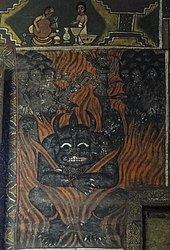





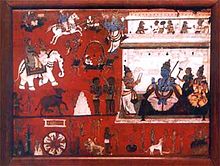
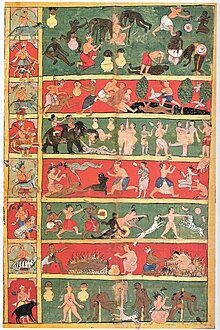

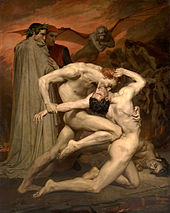
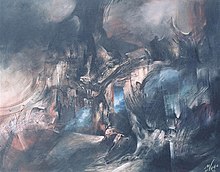


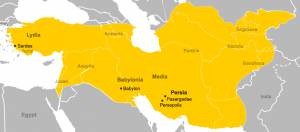
 Based on
Based on 







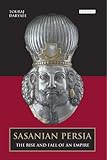
















No comments:
Post a Comment